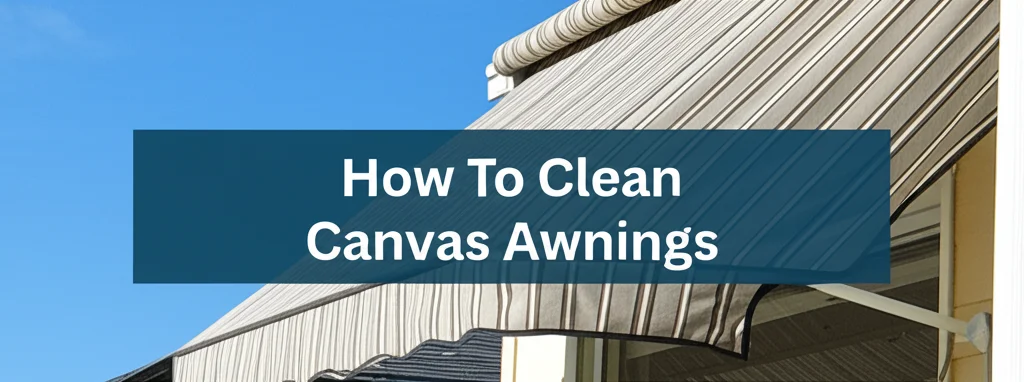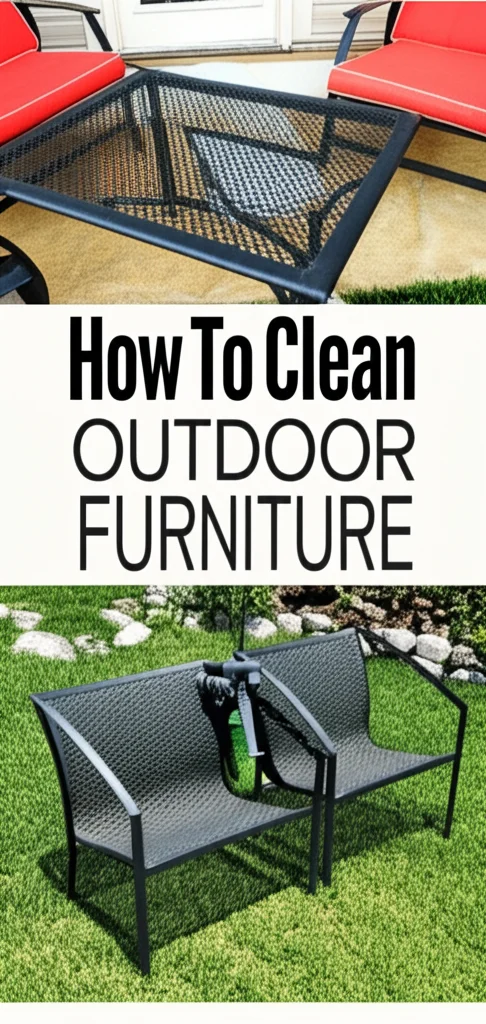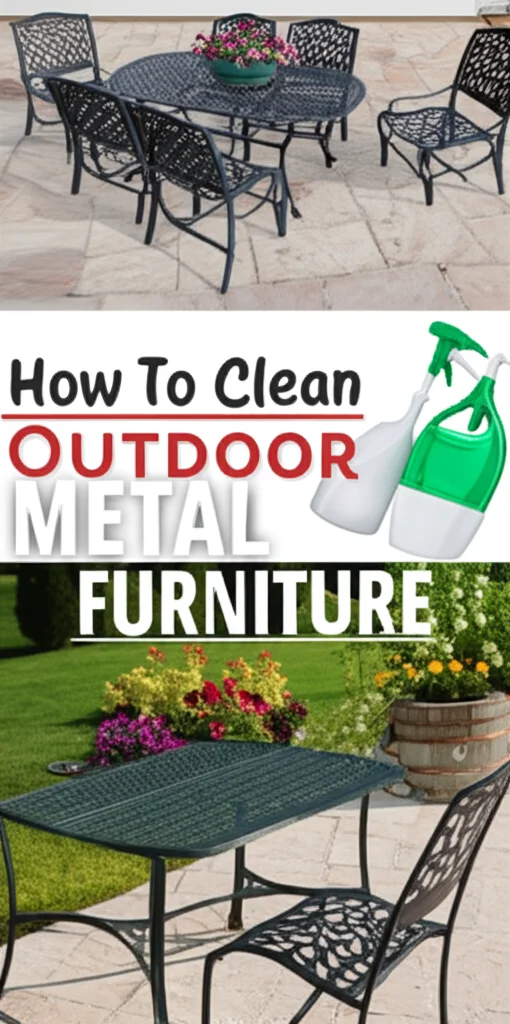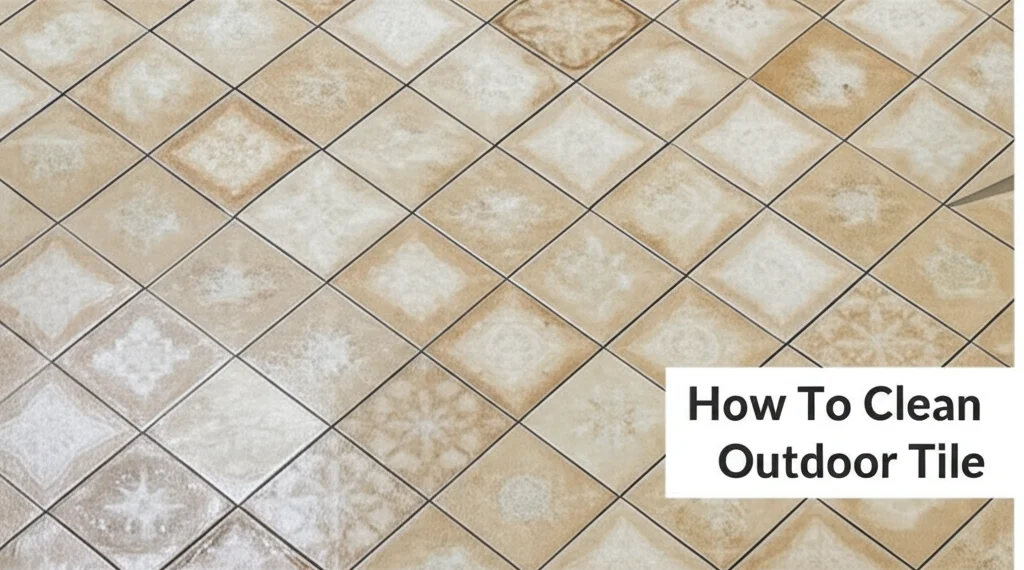· Outdoor Cleaning · 6 min read
How To Clean Canvas Awnings

Revitalize Your Shade: A Guide to Cleaning Canvas Awnings
Is your canvas awning looking a little drab? Don’t let dirt and grime ruin your outdoor enjoyment! A clean awning not only looks better but also lasts longer. This article will show you exactly how to clean canvas awnings, restoring their vibrant color and protecting your investment. We’ll cover everything from gentle cleaning solutions to tackling stubborn stains, ensuring your awning remains a beautiful and functional part of your home for years to come. We’ll break down the process into easy-to-follow steps, so you can confidently maintain your awning’s appearance.
Quick Answer: To clean a canvas awning, gently brush off loose debris, mix mild soap with lukewarm water, apply with a soft brush, rinse thoroughly, and allow to air dry completely. Avoid harsh chemicals and excessive scrubbing to prevent damage.
Key Takeaways:
- Regular cleaning prevents dirt buildup and extends awning life.
- Mild soap and water are usually sufficient for routine cleaning.
- Avoid harsh chemicals that can damage the canvas.
- Proper drying is crucial to prevent mildew growth.
Why Regular Canvas Awning Cleaning Matters
Think of your canvas awning as the hat for your house – it protects you from the elements, but it also gets exposed to a lot of dirt and grime. Regular cleaning isn’t just about aesthetics; it’s about preserving the integrity of the fabric. Dirt, bird droppings, pollen, and mildew can all break down the fibers over time, leading to tears and weakening the material. Cleaning your awning regularly will help prevent these issues. This proactive approach saves you money on repairs or replacements in the long run.
Gathering Your Cleaning Supplies
Before you start, having the right tools makes the job much easier. You don’t need a lot, but choosing the correct items is important. Here’s a checklist of what you’ll need to effectively clean your canvas awning:
- Soft-bristled brush: A long-handled brush is ideal for reaching higher areas.
- Mild soap: Dish soap or a specialized canvas cleaner works well. Avoid harsh detergents.
- Lukewarm water: Hot water can damage the fabric.
- Garden hose with a gentle spray nozzle: For rinsing.
- Bucket: To mix your cleaning solution.
- Protective eyewear: To prevent soap from getting in your eyes.
- Optional: Fabric protector: To help repel future stains.
Step-by-Step: The Gentle Cleaning Process
Now that you have your supplies, let’s get cleaning! This method is perfect for routine maintenance and removing light dirt. It’s a simple process that yields great results. Follow these steps for a sparkling clean awning:
- Remove Loose Debris: Begin by brushing off any loose dirt, leaves, or bird droppings with your soft-bristled brush. This prevents you from grinding the debris into the fabric during washing.
- Mix Your Cleaning Solution: In your bucket, combine a small amount of mild soap with lukewarm water. A good ratio is about 1/4 cup of soap per gallon of water.
- Apply the Solution: Dip your brush into the soapy water and gently scrub the awning in a circular motion. Work in sections, and avoid applying excessive pressure.
- Rinse Thoroughly: Use your garden hose with a gentle spray nozzle to rinse the awning completely. Ensure all soap residue is removed, as leftover soap can attract dirt.
- Air Dry: Allow the awning to air dry completely before retracting it. This is crucial to prevent mildew growth. Avoid direct sunlight during drying, as it can cause fading.
Tackling Stubborn Stains on Your Canvas
Sometimes, gentle cleaning isn’t enough. If you’re dealing with stubborn stains like mildew, bird droppings, or tree sap, you’ll need a slightly more targeted approach. Here’s how to handle those tricky spots:
- Mildew: Mix a solution of 1 cup of oxygen bleach with 1 gallon of water. Apply to the affected area, let it sit for 15-20 minutes, then scrub gently and rinse thoroughly. You can find oxygen bleach at most grocery stores.
- Bird Droppings: Soak the area with warm water to soften the droppings. Then, gently scrape them off with a plastic scraper or a soft brush. Follow with the gentle cleaning process described above.
- Tree Sap: Use a commercial tree sap remover specifically designed for fabrics. Follow the product instructions carefully. Always test the remover in an inconspicuous area first.
- Oil-Based Stains: Sprinkle baking soda on the stain to absorb the oil. Let it sit for several hours, then vacuum it up. Repeat if necessary. You can learn more about removing stains from carpets here.
Protecting Your Canvas Awning for the Future
Once your awning is clean, you can take steps to protect it from future damage. Preventative care is key to maintaining its appearance and extending its lifespan. Consider these protective measures:
- Fabric Protector: Apply a fabric protector spray specifically designed for canvas. This will help repel water and stains.
- Regular Inspections: Regularly inspect your awning for any signs of damage, such as tears or mildew. Address any issues promptly.
- Retract During Harsh Weather: Retract your awning during strong winds, heavy rain, or snowstorms to prevent damage.
- Professional Cleaning: Consider having your awning professionally cleaned every 1-2 years for a deep clean and thorough inspection.
Drying Your Canvas Awning Properly
Proper drying is arguably the most important step in the cleaning process. If your awning isn’t completely dry before being retracted, it can create a breeding ground for mildew. Here’s how to ensure proper drying:
- Air Dry Only: Never use a heat gun or hairdryer to speed up the drying process. Heat can damage the canvas.
- Extend Fully: Extend the awning fully to allow for maximum airflow.
- Check for Dampness: Before retracting, carefully check for any damp spots. If you find any, allow them to dry completely.
- Consider the Weather: Choose a dry, sunny day for cleaning to facilitate faster drying.
FAQ: Your Canvas Awning Cleaning Questions Answered
Q: Can I use a pressure washer to clean my canvas awning?
A: No, a pressure washer can damage the canvas fibers. The high pressure can cause tears and weaken the material. Stick to gentle cleaning methods with a soft brush and a garden hose.
Q: How often should I clean my canvas awning?
A: It depends on your environment. Generally, cleaning it 2-3 times per year is sufficient. If you live in a dusty or polluted area, you may need to clean it more frequently.
Q: What type of soap is best for cleaning canvas?
A: Mild dish soap or a specialized canvas cleaner are the best options. Avoid harsh detergents, bleach, or abrasive cleaners.
Q: How can I prevent mildew from growing on my awning?
A: Ensure the awning is completely dry before retracting it. Applying a fabric protector can also help repel moisture and prevent mildew growth. You can also find helpful tips on removing mold from other surfaces here.
Conclusion: Enjoy a Beautiful and Protected Outdoor Space
Cleaning your canvas awning doesn’t have to be a daunting task. By following these simple steps, you can keep your awning looking its best and protect your investment for years to come. Remember to use gentle cleaning solutions, rinse thoroughly, and allow for complete drying. A clean canvas awning enhances your outdoor living space and provides reliable shade for countless seasons. Don’t hesitate to tackle this maintenance task – your awning will thank you for it!




